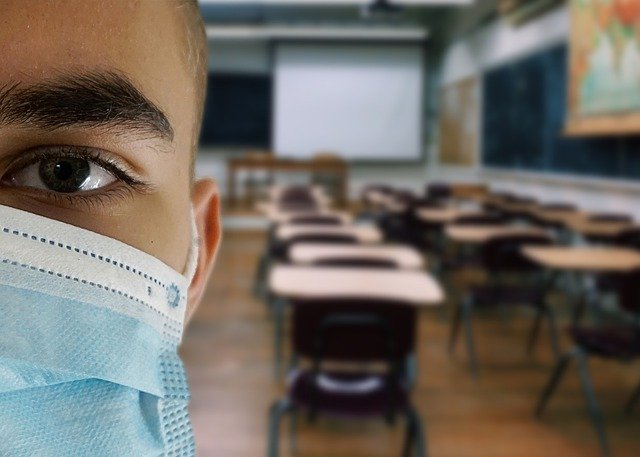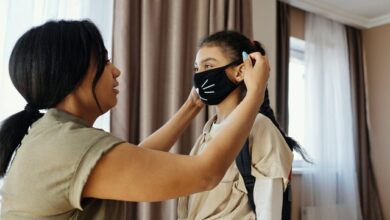Schools Scramble for a Plan to Safely Reopen Their Doors to Students

It is fair to say that schools all over America are in unprecedented territory when it comes to coming back in the late summer or early fall. With the COVID-19 pandemic still surging in many parts of the country, school officials are trying to quickly come up with plans to bring back students without jeopardizing the health of students and staff in the process.
School administrators are also struggling with finding a way to pay for many of the upgrades necessary without any federal aid. This perfect storm of challenges is causing many state and school officials to worry that attempting to get kids back into school may have potentially disastrous consequences.
Trump Threatens to Withhold Funding from Districts That Don’t Bring Students Back in the Fall
Schools have been under enormous pressure from the Whitehouse to get students back into the classroom for the start of the school year. President Trump has stated that he will withhold any federal funding to districts that do not bring students back for in-person classes for the start of the school year. While Trump can’t unilaterally prevent funding from going to schools, he can block any money from the CARES Act, passed in March, from going to learning institutions that don’t open. While this is unlikely to stick, it could cause a catastrophic delay in funding that would disproportionately impact students in low-income areas.
The Centers for Disease Control Releases School Reopening Guidelines
At the center of this conflict is the ability of schools to meet the Centers for Disease Control (CDC) guidelines for reopening schools safely. These recommendations will cost many districts a lot of money that they currently don’t have because funding for a second relief package has stalled in Congress. The House of Representatives passed a three trillion-dollar package that Senate Majority leader, Mitch McConnell, has said has no chance of passing the Republican-controlled senate. McConnell has also stated that he expects that a second relief package will be passed, but didn’t give any timeline as to when that would happen, leaving schools unable to count on any further federal assistance.
Some of the guidelines recommended by the CDC include multiple hand sanitizer stations and multiple bus routes so students can socially distance easier. The strict cleaning and sanitation recommendations are expected to cost the average school district 1.8 million dollars, according to the American Association of School Administrators. This price tag includes $40,000 for disinfectant wipes and $26,000 for a deep-clean when a student or staff member has been confirmed to have COVID-19. Also, many schools are installing plexiglass partitions between students in an attempt to reduce the spread of the coronavirus. Trump has criticized the CDC recommendations as being too strict and too costly to be realistic.
What Will School Look Like in the Fall?
With so many questions up in the air, it has left many families wondering what school will look like in the fall. Secretary of Education Betsy DeVos is on record stating that she feels that schools should open with students being in school full-time. She has yet to offer any recommendations on how that should be done but has stated that, since the mortality rate for children appears to be lower, she doesn’t expect that they would be in any danger. Health officials state that, while it appears that children don’t appear to be impacted as greatly as older individuals by this virus, they are not immune and may be able to spread it to teachers and family who are in much more vulnerable populations.
Some school districts have considered having a hybrid model, where students spend part of the time in school and do some of their work remotely. This plan could put pressure on families, many of whom are unable to stay home to supervise children learning remotely because they are required back at their job. To solve this issue, some school districts are suggesting that students may be set up with a spot in the school library, or other such places, where they can focus on their remote learning. There has been a particular focus on children in the third grade and below who may have a tougher time with learning remotely.
To come at the issue from outside the box, some school systems are proposing that they have a yearlong schedule while the illness continues to be an issue in the country.
This would give schools the chance to run a rotating schedule that will phase in both in-class and remote work.
Unfortunately, if federal aid doesn’t arrive quickly, schools may need to implement these plans with a smaller staff.
Some school districts are reporting that they may need to lay off more teachers and staff if they don’t get some assistance before the school year starts.
No Easy Answers
It is clear to say that schools are not in the position to offer any simple solutions to reopening safely.
Because of a lack of funding and the coronavirus continuing to rise in many parts of the United States, it is difficult to imagine a scenario where schools can pull off a seamless open as they would during a normal year. Unfortunately, the issue is not as clear as just making all the students wear masks and having them wash their hands frequently. This problem has a lot of moving parts and they don’t seem to be moving in harmony.
Until a vaccine is available, a solution to reopening schools will need cooperation on federal, state, and local levels that has become hard to find in an increasingly divisive political environment. Beleaguered school districts are hoping that the many players can rally together so they can safely open their doors to children in some capacity this year.





